In 2024, the world gold price will continuously increase, setting many new records. ETF funds - "sharks" in the gold market, are trading actively when continuously buying, selling, and taking profits.
Data from the World Gold Council (WGC) shows that in 2024, demand for ETFs from Asia will be the most stable.
Asian “sharks”, most of them from China, bought gold as the country’s currency weakened and the property market struggled, boosting demand for safe havens.
From January to March, gold prices fell slightly, European and North American funds sold gold, only Asia bought. Gold prices rose sharply in March, North American ETFs began to jump in to buy gold, European funds seized the opportunity to sell to take profits.
In late March to mid-April, Asian ETFs continued to be strong buyers, European funds continued to be net sellers, and North America largely stayed on the sidelines.
When gold prices hit above $2,400 an ounce in mid-May, North America and Europe resumed buying gold. Asian funds sold or stopped buying gold due to record high prices.
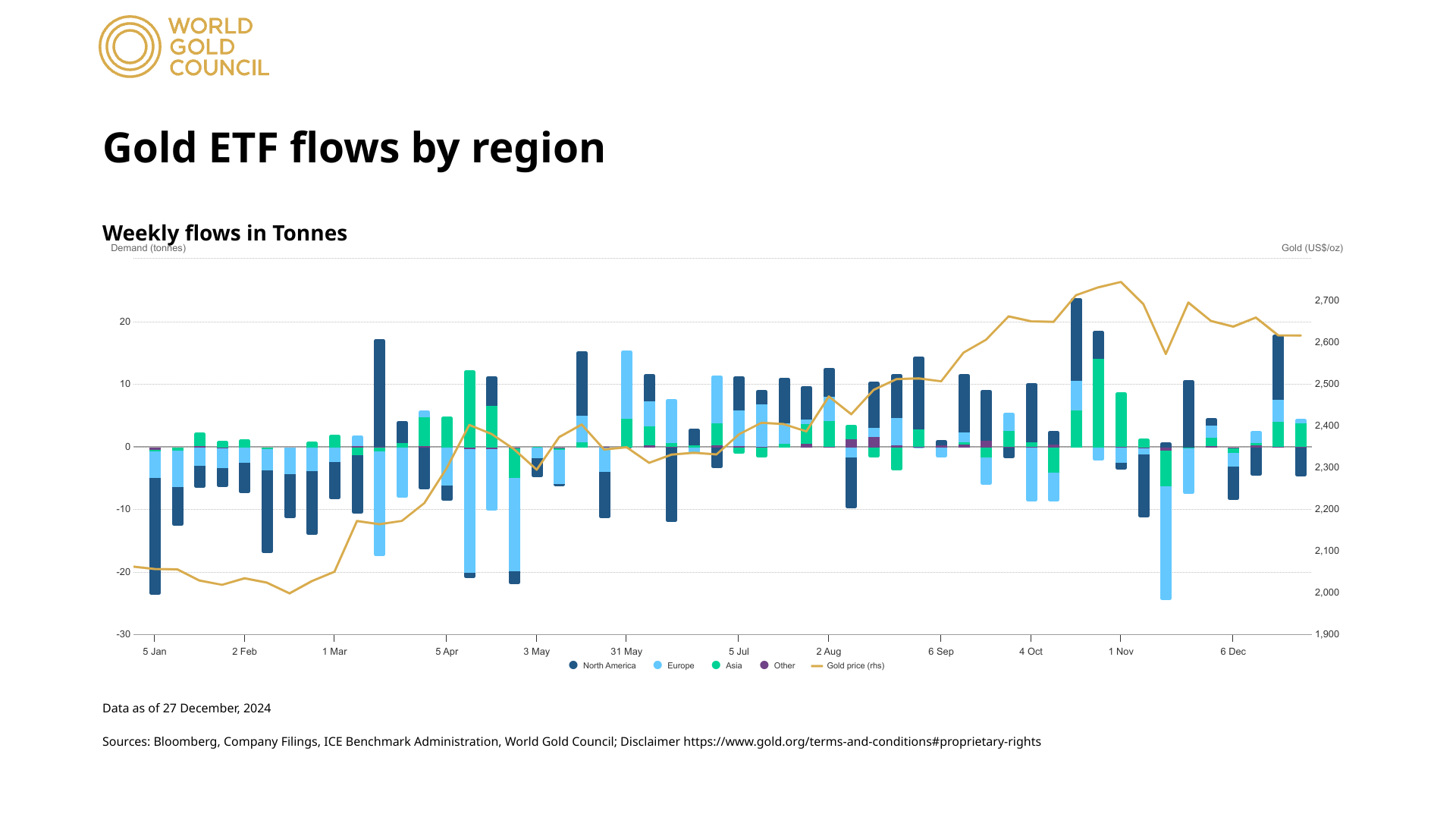
In the following period, the gold price was above 2,400 USD/ounce, North American and European funds bought more gold. The demand of Asian funds also increased again due to the forecast that the gold price could set new records.
In September, gold prices broke the $2,500/ounce mark, and North American funds became more interested in buying gold. Asian funds kept their gold holdings unchanged or added very little.
By the time the gold price rose above $2,600/ounce in early October, demand for gold from Asian funds skyrocketed, with three consecutive weeks of massive net gold purchases.
During the US presidential election, gold prices fell sharply, causing North American and European funds to leave the market. Asian funds again invested in gold at attractive prices.
When gold prices fell below $2,600 an ounce in mid-November, European and Asian investors liquidated nearly 25 tonnes of gold in just one week.
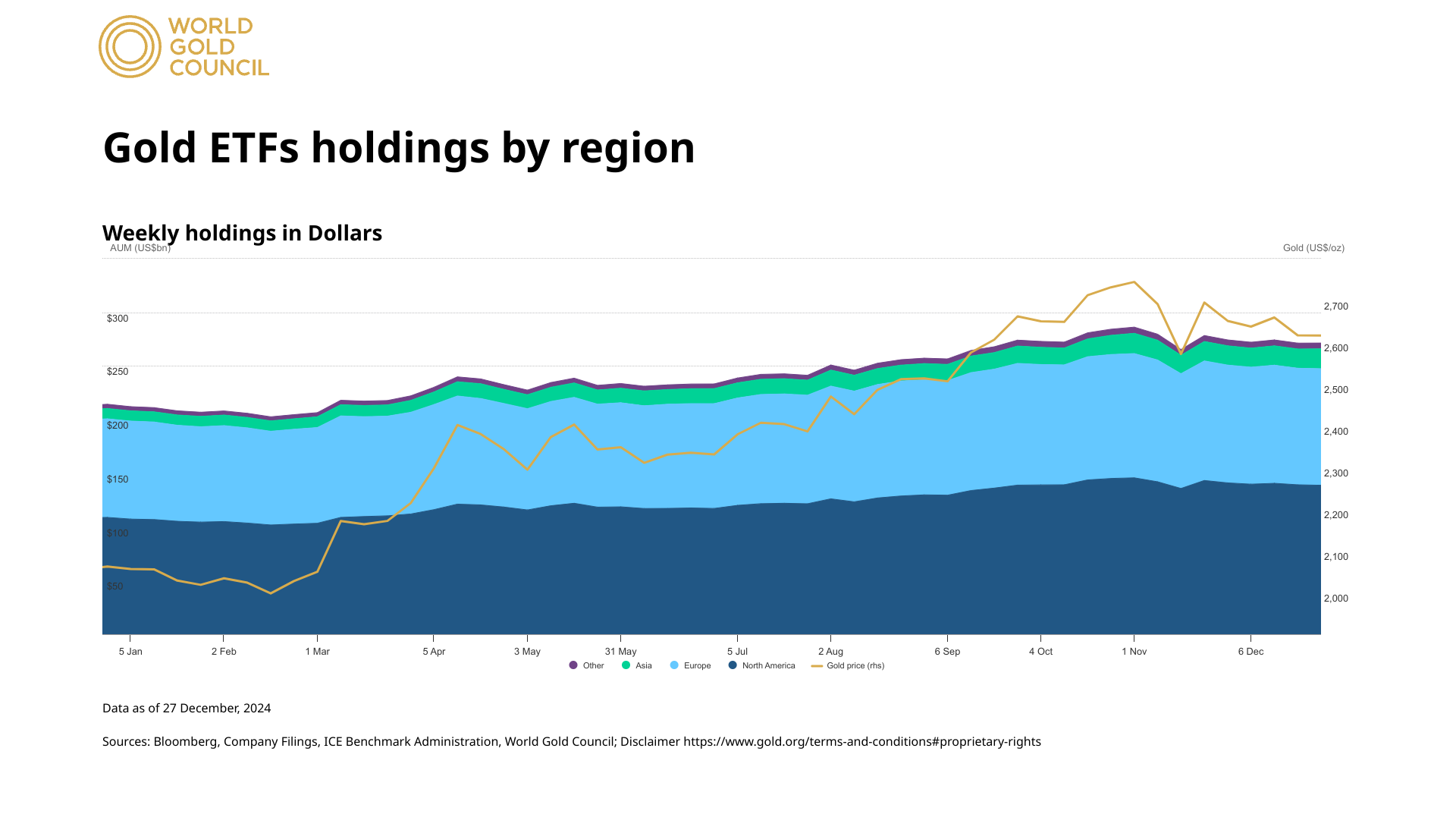
At the end of the year, gold prices rose again above $2,600/ounce, North American funds bought gold. In the last 2 weeks of 2024, Asian ETFs also bought gold again.
According to the WGC, despite being one of the “sharks” buying the most gold in the market last year, Asian funds still lag behind North America and Europe in terms of the quantity and value of gold held. The global gold ETF market is still dominated by North American and European funds.
Asian funds are largely in the Chinese market. China AMC Gold ETF and ICBC Credit Suisse Gold Fund, increasing their gold holdings by more than 9% by 2024.
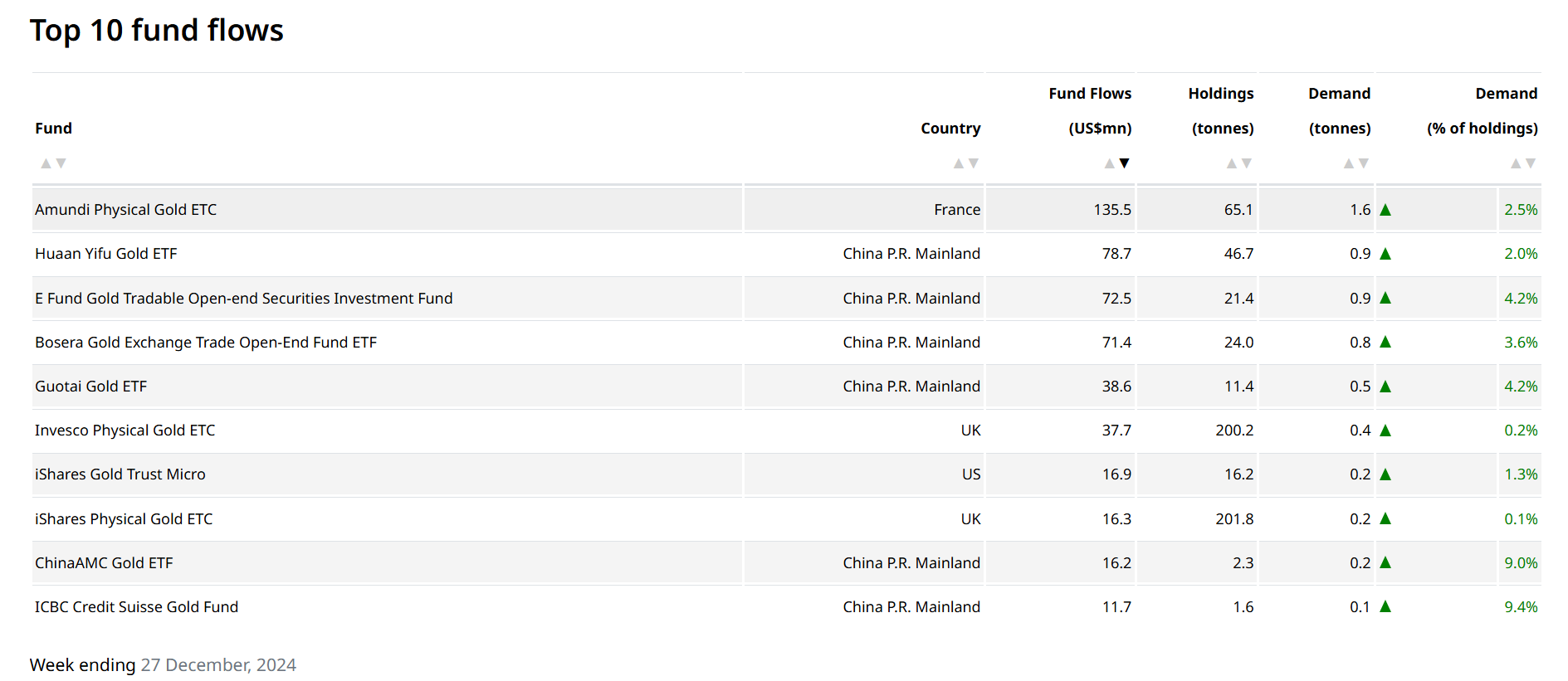
European and North American funds top the list of gold ETFs selling. SPDR Gold Shares and Invesco Physical Gold EUR Hedged ETC sell large amounts of gold in 2024.
Despite market expectations of a US Federal Reserve (Fed) monetary policy easing cycle and record high prices, global gold ETFs still ended 2024 with outflows, net selling for the fourth consecutive year.

The prospect of a Fed rate cut in 2024 helped revive demand for gold ETFs, but the US election results in November put an end to the new rally, according to Bloomberg.
A stronger dollar after Donald Trump’s victory has triggered another sell-off in exchange-traded funds. Bullion prices have fallen from all-time highs as investors divert money into stocks and Bitcoin.
In addition, geopolitical risks from conflicts in Ukraine and the Middle East have prompted emerging market central banks, Asian investors and consumers to flock to physical gold as a portfolio diversifier and hedging tool, which has also reduced demand for gold ETFs.
Source: https://vietnamnet.vn/gia-vang-lien-tuc-lap-ky-luc-ca-map-nao-gom-mua-nhieu-nhat-2360084.html



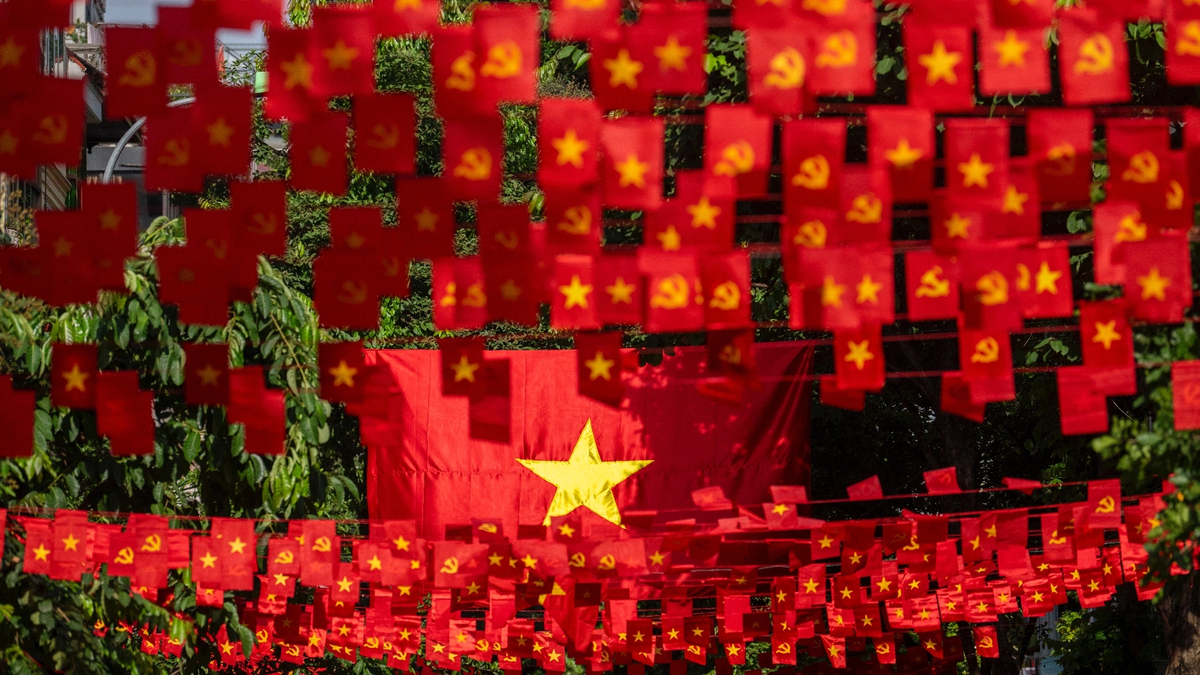

![[Photo] General Secretary To Lam attends the 80th Anniversary of the Cultural Sector's Traditional Day](https://vphoto.vietnam.vn/thumb/1200x675/vietnam/resource/IMAGE/2025/8/23/7a88e6b58502490aa153adf8f0eec2b2)

![[Photo] Prime Minister Pham Minh Chinh chairs the meeting of the Government Party Committee Standing Committee](https://vphoto.vietnam.vn/thumb/1200x675/vietnam/resource/IMAGE/2025/8/23/8e94aa3d26424d1ab1528c3e4bbacc45)
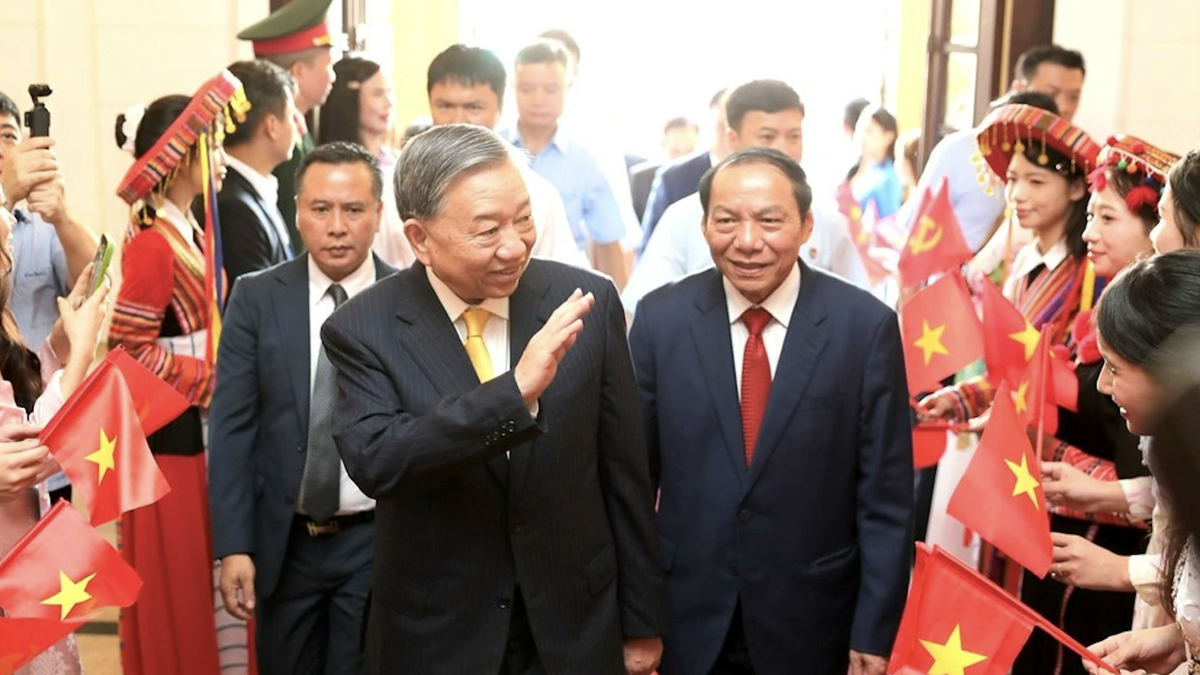







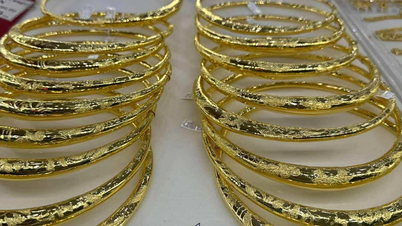




















































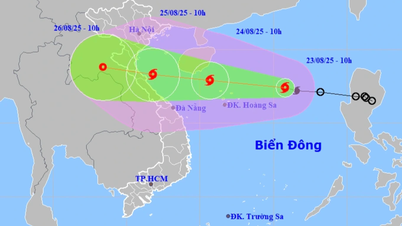









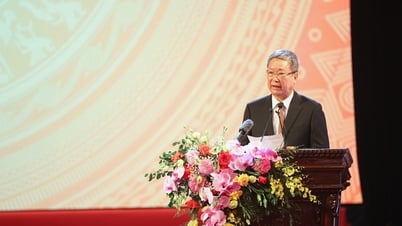


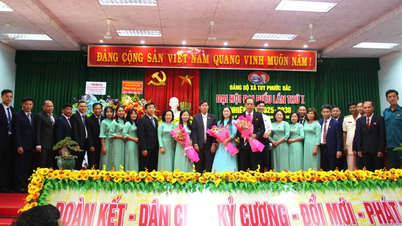




















Comment (0)